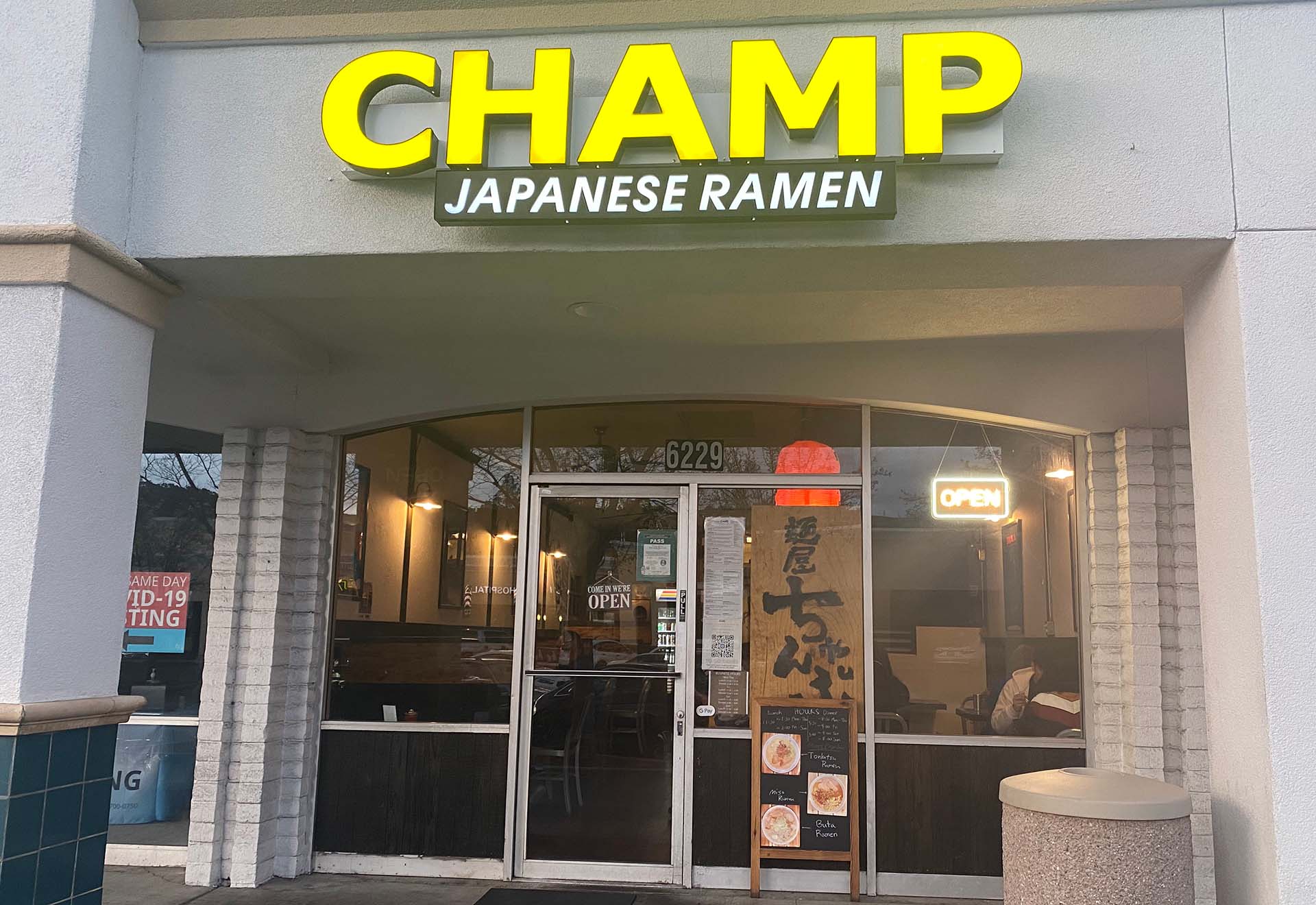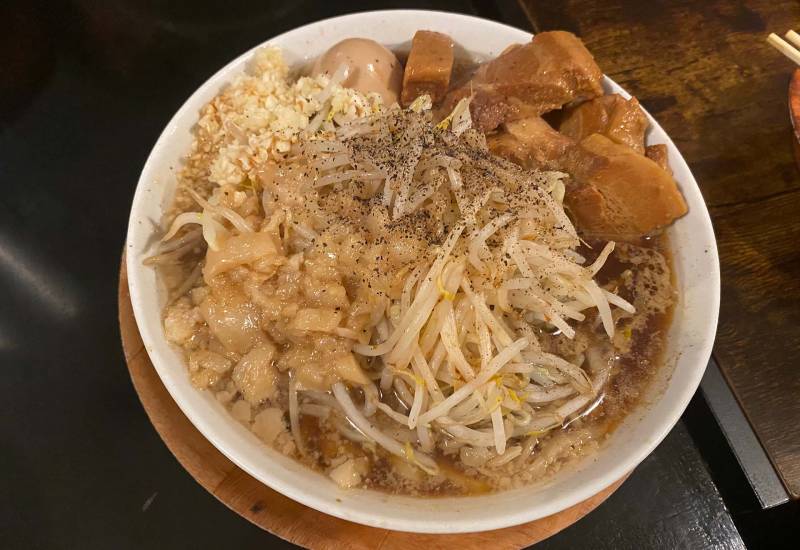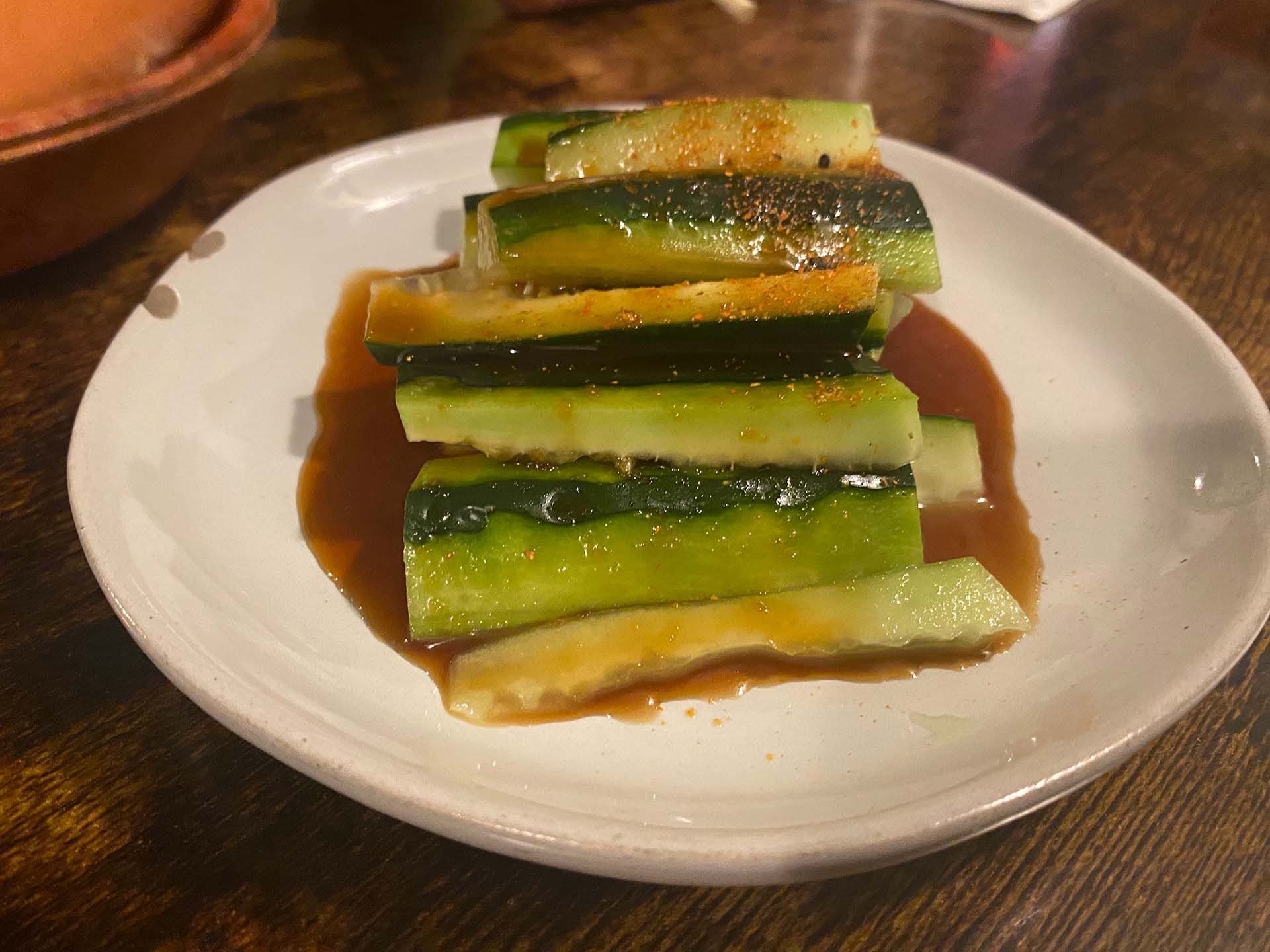San Jose’s most extreme bowl of ramen comes topped with a mountain of bean sprouts so massive, you can barely see the broth underneath. Everything about the “Buta MAX” ramen at Ramen Champ is extra: the noodles and pork that are cut extra, extra thick. The vampire-murdering portion of raw garlic. The portion size, in general, abundant to the point of intimidation.
It’s a meal you would eat to prepare yourself for a long winter hibernation. And it also happens to be one of the most delicious things I’ve eaten this year.
Cloistered away in an anonymous South San Jose shopping plaza, in a city jam-packed with similar-looking strip malls, Ramen Champ is the only Bay Area ramen shop I’m aware of that specializes in what’s known in Japan as “Jiro-style” ramen. The restaurant is the creation of chef-owner Shogo Hara, who opened Ramen Champ in December of 2021 after spending the past several years working at other South Bay and Peninsula ramen shops while also running a bento box catering business.
“[Chef Shogo] wanted to have a different style of ramen, as opposed to the very neat-looking ramen styles,” explains Kento Takahashi, a Ramen Champ employee who helped translate for Hara and spoke on his behalf. “The Jiro style was very visually appealing.”

To really understand the legend of Jiro ramen, however, you have to trace the style back to its origins in Tokyo, where it enjoys a cult following that’s unusually fervent even in a nation of dedicated ramen heads. Yamada Takumi opened the original Ramen Jiro in the Meguro neighborhood in 1968, but the shop’s popularity didn’t take off until a few years later when it moved to a storefront near Keio University. There, it carved out a niche selling huge, relatively inexpensive bowls of ramen to frugal college kids. That in itself wasn’t exactly groundbreaking, but the specifics of the ramen style that Yamada developed were: the absurdly large mound of bean sprouts and cabbage, the raw garlic, the nubs of soft pork fat and generous quantity of braised pork belly, which came in big chunks instead of your typical sliced chashu.



